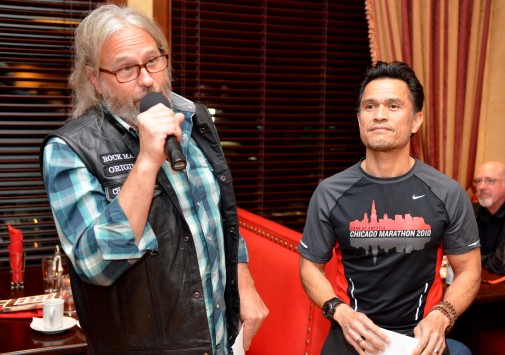
My masculinity: Then and now

It was the summer of 1982 at the Atlis Gym in Wildwood, New Jersey.
Three of my roommates and I would work out then head over to the beach to sleep. I had several jobs – fast food, the convention center and a liquor store – but the guys I lived with worked at a nightclub.
It was two bouncers and a bartender with a lot of testosterone looking to be balanced out with equal portions of estrogen. That was the picture of masculinity then, a mix of Arnold Schwarzenegger height and width with a touch of professional football freaks of nature as steroid use at that time was back alley and underground.
I am not professing steroids are the only way to get big, but with limited access to anabolic steroids during that time, there was a clear division between regular men and what people considered “real men.” Truth of the matter is most of the “monsters” I used to know have died or gone onto chronic disease.
In the last 30 years, athletes have abounded in “non-muscle sports” like golf, tennis and skateboarding, to name a few.
Gatorade has helped fuel the “little guy” in getting recognition as “ripped,” and cardiovascular sports have become the new challenge in running personal records two to three times a year in back-to-back marathons or Iron Man competitions. Nike has also embraced colorful, light, soft, orthopedically correct shoes that are anything other than AstroTurf ready.
Even in the world of medicine, longevity instead of power has taken over to signal the change from garnishing unbridled testosterone to instead proper macronutrient measurement and well-orchestrated sleep patterns and recovery.
Fast forward to the summer of 2015, and I am now pushing weight (can’t bang iron anymore in the gym as Planet Fitness encourages a no-judgment zone where grunting and clanging iron is met with a loud train horn and flashing lights).
The resistance exercise movements are about the same – squatting, bench press, lateral cable raises and overhead press – but the research has found benefits to cutting down time spent with weights in favor of rapid transitions, little rest between sets and presto, done in 20 minutes.
The concept of Tabata-type exercises and high intensity interval training has done wonders for my free time in that I can now be finished with a good “pump” in a fraction of the time spent in front of the mirrors shoulder to shoulder with other ego-centered guys thinking they are getting healthy when in actuality, the weights do little for longevity.
What better way to work with longevity than to cut out of the gym faster than some gym newbies take to warm up, travel across town and make it just in time to roll out my mat and start meditative yoga.
Yes, I used to do 15 to 20 minutes of stretching to prep for my two hours of barbell and dumbbell use, but now I’m almost back to body building weight at 53 years old, a low body fat percentage and probably better endurance, lower cholesterol and better sleep than any point in my life.
I love watching the expression of people when I tell them how old I am. I have adopted an anti-inflammatory diet, started teaching yoga and lead hiking groups to local and national wilderness.
Don’t get me wrong, I still love the feeling of pumped up, tight, well-fueled body parts, but I think with science showing the benefits of nutritional efficiency combined with cardiovascular fitness, mixing this with old school weight training yields faster gains, less injury and better health outcomes.
With the age of the Internet evolving rapidly, it is difficult to sort through blogs that are written by Kim Kardashian and research funded by the National Institutes of Health. One really has to be used to sifting through the weeds to find the fruit.
The beauty is if you know how to interpret data, you will be able to take advantage of chasing down the fountain of youth.
This is where I believe the biggest change has occurred between the concept of masculinity now and from days gone by. Confidence combined with personal success and an aura of health are the true “studs” of today.









The term masculinity encompasses traits that we have biologically evolved and socially labeled. Like anything really, there are good and bad sides to these traits. To me masculinity encompasses strength which in itself, again, has good and bad outcomes. This trait may drive some men to become “meatheads” and slowly but surely destroy their body at the expense of physical strength, but others may have this trait drive them to becoming conditioned/athletic which increases their overall health prospects for year to come. A balanced approach to attaining “strength” is probably best for any man…or women for that manner……any human being really. I know my wife prefers a “soccer bod” and that’s my goal post!